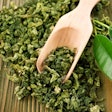Petfood manufacturers have for years been aggressively exploring the world for quality economical ingredients. More recently, companies have tried to find novel and unusual ingredients to attract pet owners' attention. But a new motivation may soon be pushing the introduction of novel ingredients--scarcity.
Plankton: coming soon to a petfood near you
Petfood manufacturers have for years been aggressively exploring the world for quality economical ingredients. More recently, companies have tried to find novel and unusual ingredients to attract pet owners' attention. But a new motivation may soon be pushing the introduction of novel ingredients--scarcity.





